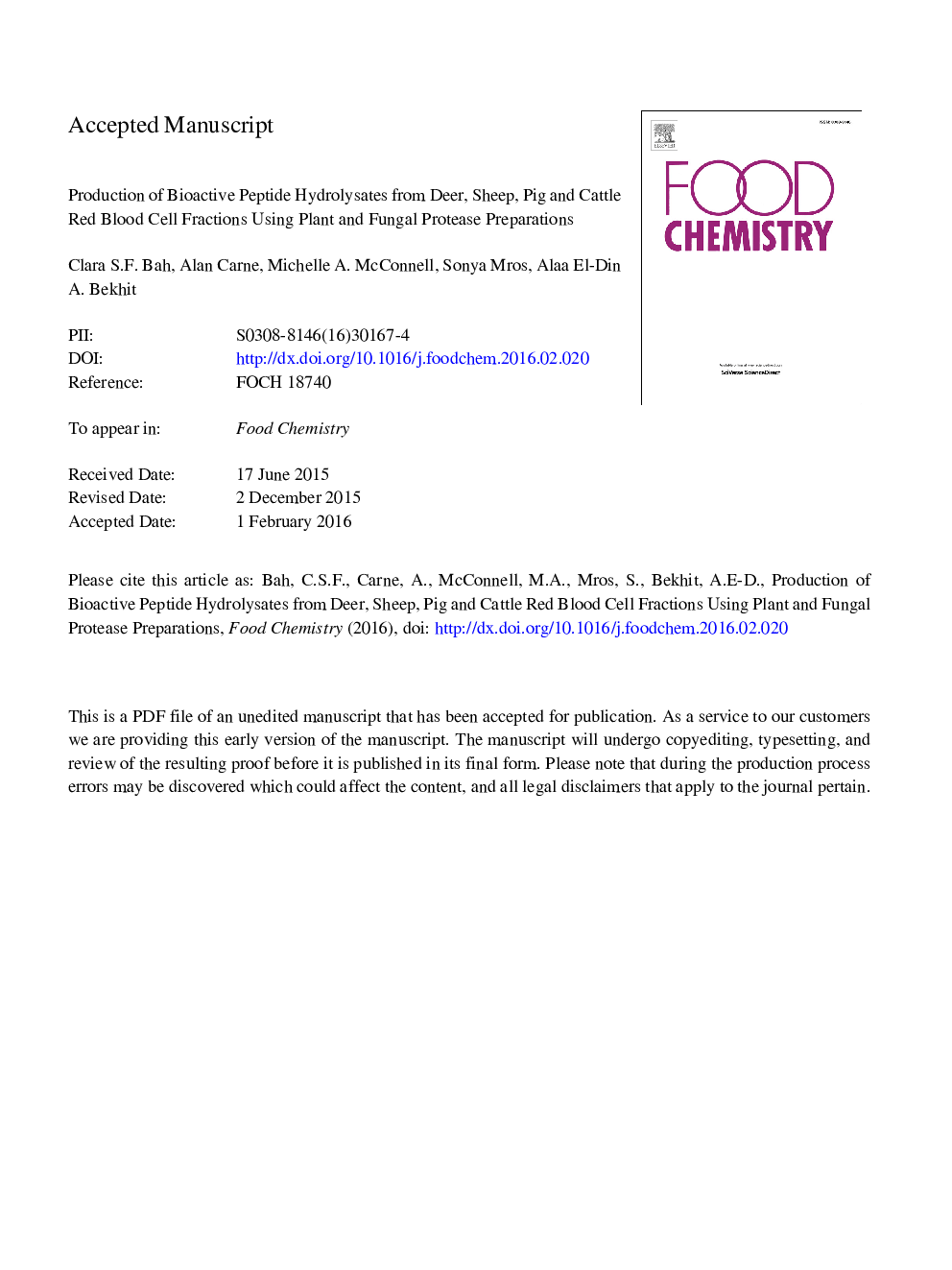| Article ID | Journal | Published Year | Pages | File Type |
|---|---|---|---|---|
| 7589382 | Food Chemistry | 2016 | 30 Pages |
Abstract
Protease preparations from plant (papain and bromelain) and fungal (FP400 and FPII) sources were used to hydrolyze the red blood cell fractions (RBCFs) separated from deer, sheep, pig, and cattle abattoir-sourced blood. After 1, 2, 4 and 24Â h of hydrolysis, the antioxidant and antibacterial activities of the peptide hydrolysates obtained were investigated. The increase in trichloroacetic acid-soluble peptides over the hydrolysis period was examined using the o-phthaldialdehyde (OPA) assay and the hydrolysis profiles were illustrated using SDS-PAGE. Papain generated RBCF hydrolysates exhibited higher ferric reducing antioxidant power (FRAP) and oxygen radical absorbance capacity (ORAC) compared to those generated with bromelain, FP400 and FPII. At certain concentrations, 24Â h hydrolysates of RBCF using FP400 and FPII were able to inhibit the growth of Escherichia coli, Staphylococcus aureus and Pseudomonas aeruginosa. The results indicated that the use of proteases from plant or fungal sources can produce animal blood hydrolysates with antioxidant and antimicrobial activities.
Related Topics
Physical Sciences and Engineering
Chemistry
Analytical Chemistry
Authors
Clara S.F. Bah, Alan Carne, Michelle A. McConnell, Sonya Mros, Alaa El-Din A. Bekhit,
